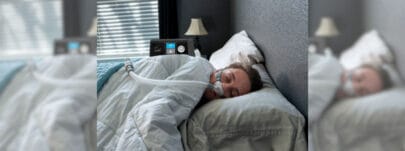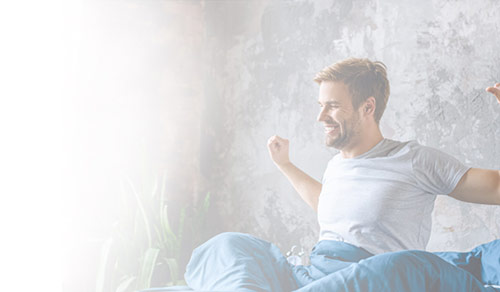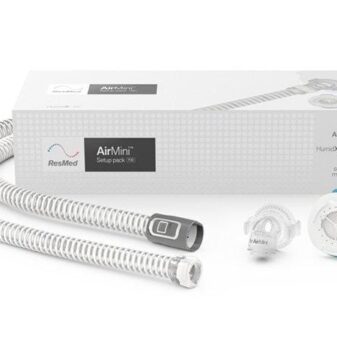
Does a CPAP Work for Treating Sleep Apnea Symptoms?
Certain illnesses are acute in nature while others can exhibit symptoms that may last for a lifetime. Obstructive sleep apnea is a perfect example of how a chronic condition can dramatically impact our existence, and as of yet, there is no cure.
However, science now provides a host of effective treatment options, one of the most successful involving the use of a continuous positive airway pressure (CPAP) device.
Readers may be pleasantly surprised to learn that those who regularly use a CPAP can enjoy success rates of up to 80 percent.
So, how does a CPAP work? Why is it preferred by so many individuals who are struggling to maintain control over their sleep apnea symptoms? What can you expect when using such a device?
If you have been diagnosed with obstructive sleep apnea or you are hoping to help a friend, this article is intended to provide a much-needed source of insight.
How Does CPAP Work?
It makes sense to begin by discussing the basic principles of any continuous positive airway pressure device. This unit can be segmented into a handful of core components:
- A compressor
- A hose
- A face mask
The purpose of a CPAP is to provide you with a supply of air at a slightly higher pressure than would be obtained by breathing alone. This arises from the fact that sleep apnea is associated with a narrowing of the airways, depriving your body of oxygen during sleep.
Pressurized air will reduce the chances of experiencing breathing difficulties while asleep.
The air is sent from the compressor through a flexible tube that attaches to a face mask. Note that different types of masks are available. These can be broken down into these types:
- Full face masks
- Nasal masks
- Pillow masks
The mask that’s best for you will ultimately depend on variables such as the severity of your obstructive sleep apnea as well as personal preferences.
The Different Types of PAP Devices
Customization is key and there are many types of PAPs to consider. These are often selected in accordance with your symptoms. Let’s examine three common options.
APAP
APAP is an acronym for automatic positive airflow pressure. This device will automatically adjust the airflow sent from its compressor while you are asleep. The primary goal is to compensate for variables such as breathing patterns and sleeping positions.
BiPAP
A BiPAP device is equipped with two different pressure settings (hence the name “bi-level positive airflow pressure”). It provides air at a slightly higher pressure when breathing in, and this pressure will lower when exhaling.
A BiPAP is often used by those who have not experienced positive results with a CPAP. These units may likewise be able to alleviate the symptoms associated with a certain type of sleep disorder known as central sleep apnea.
Standard CPAP Units
Continuous positive airway pressure devices are the most common, and they will provide a steady flow of pressurized air while sleeping. These are used to address mild to moderate symptoms, and they are highly effective. However, note that the user will have to adjust the pressure manually. There are no automatic settings.
What Benefits Can a PAP Offer?
We should now address an entirely relevant question. What advantages can users expect when incorporating PAP treatments in their daily lives? Perhaps the most important involves the ability to finally obtain an adequate amount of rest without constantly awakening throughout the night. This is still only the beginning.
Studies have concluded that PAPs offer additional advantages; many of these directly related to sleeping the recommended number of hours. Benefits include:
- A reduced risk of suffering a myocardial infarction (heart attack) or stroke.
- Lower systolic and diastolic blood pressure readings.
- The ability to avoid daytime lethargy.
- Studies suggest that a CPAP could help to moderate cholesterol and glucose levels.
Let us also remember that those who remain alert throughout the day are more likely to adopt other habits such as a healthy diet, and obtaining plenty of physical exercise. Therefore, other risks including adult-onset diabetes and obesity can be mitigated.
Are There Any Possible Drawbacks?
It is just as important to adopt an objective mindset so that you can make an informed decision when the time is right. While CPAP treatments are highly effective, they might not be suitable for everyone. There may also be instances when the user experiences unintended side effects such as:
- A dry mouth
- A sore throat
- Nasal congestion
- Irritation where the mask contacts the skin of the face
- Bloating
- Respiratory infections (especially if the device is not cleaned on a regular basis)
These symptoms will vary from individual to individual, and are generally mild in nature.
Are There Other Ways to Treat Sleep Apnea?
Studies have cast little doubt upon the effectiveness of PAP devices. Still, there are some other options to consider if you happen to be tackling more severe symptoms.
Changing your sleeping position, using oral appliances such as custom-made mouthpieces, losing weight, and some types of surgery (such as adenoid removals) could provide impressive results. It is nonetheless important to speak with a qualified specialist so that the correct way forward can be implemented sooner as opposed to later.
A Miracle of Modern Technology
Why continue suffering from sleep problems when there are so many effective solutions at your disposal? Using a PAP device will provide a much-needed “breath of fresh air”, and you should be pleasantly surprised with the results that these clever devices can provide.
Sources:




